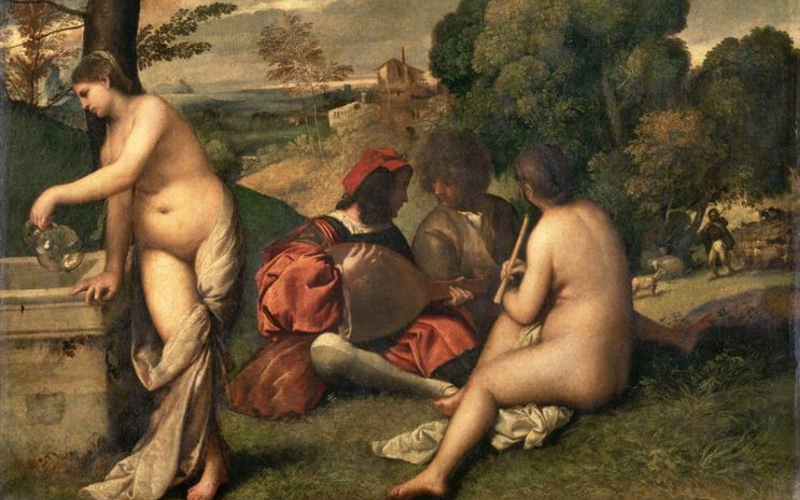One of the mysteries of European painting is this piece because, despite its undeniable excellence and epoch-defining significance, there are conflicting views on both its author and its subject.
It is considered to be Giorgione’s greatest artistic achievement and the pinnacle of the Venetian Renaissance. In fact, some believe Titian may have painted it or at least completed it before Giorgione.
The work, which was unquestionably painted by him, has been interpreted as an allegory of nature, similar to Giorgione’s Storm, and it has even been called the forerunner of the modern herdsman genre. It must have a more nuanced message than this.
It is likely that the artist purposefully combined several themes in this work, and even at the time of its creation, understanding the symbols required some level of erudition.
The painting was first referred to in the eighteenth century simply as “Pastorale,” and it wasn’t until much later that its celebratory atmosphere led to the title “Fête champêtre” or “Concert champêtre.” Modern scholarship has revealed that the piece is actually an allegory of poetry.
The naked female figures in the foreground, who are most likely the poetic Muses, reveal their divine nature. The Muse of the inferior comedy or pastoral poetry is represented by the seated figure holding a flute, while the standing figure pouring water from a glass jar symbolizes the superior tragic poetry.
While the bareheaded youth is a mere lyricist, the well-dressed youth playing a lute is a poet of exalted lyricism. This distinction was based on Aristotle’s “Poetica,” according to the painter.
There is a duality to the landscape. A multi-story villa can be seen between the graceful, slim trees on the left, and a shepherd playing bagpipes can be seen on the right in a lush grove.
However, the result is flawlessly unified. Inspiration is given simply by the presence of the lovely, seasoned Muses; additionally, the harmony of the natural world’s colors, forms, and scenery proclaims the close connection between poetry and music as well as between man and nature.


